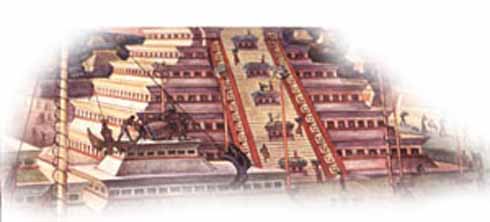Shown Materials
Lifts, steel, new materials
New, taller buildings

 Modern day architecture is completely different from past styles. It started at the turn of the 20th century but gained popularity until after World War Two. The main reason it arose was the rise of new technology, new machines and new materials. One of the biggest types of buildings that came were skyscrapers, lifts allowed building to be taller because change of levels would be easier. A few of the main ideas are: simplicity, machine aesthetic, horizontal and vertical lines are emphasized. The biggest way that a building can be distinguished as modern is when the material can be seen. Their signature is when the material can be seen on the outside. No finishes, just the material used. Like when the frame can be seen in steel and glass buildings. If steel was used, then steel it what is shown.
Modern day architecture is completely different from past styles. It started at the turn of the 20th century but gained popularity until after World War Two. The main reason it arose was the rise of new technology, new machines and new materials. One of the biggest types of buildings that came were skyscrapers, lifts allowed building to be taller because change of levels would be easier. A few of the main ideas are: simplicity, machine aesthetic, horizontal and vertical lines are emphasized. The biggest way that a building can be distinguished as modern is when the material can be seen. Their signature is when the material can be seen on the outside. No finishes, just the material used. Like when the frame can be seen in steel and glass buildings. If steel was used, then steel it what is shown. 













